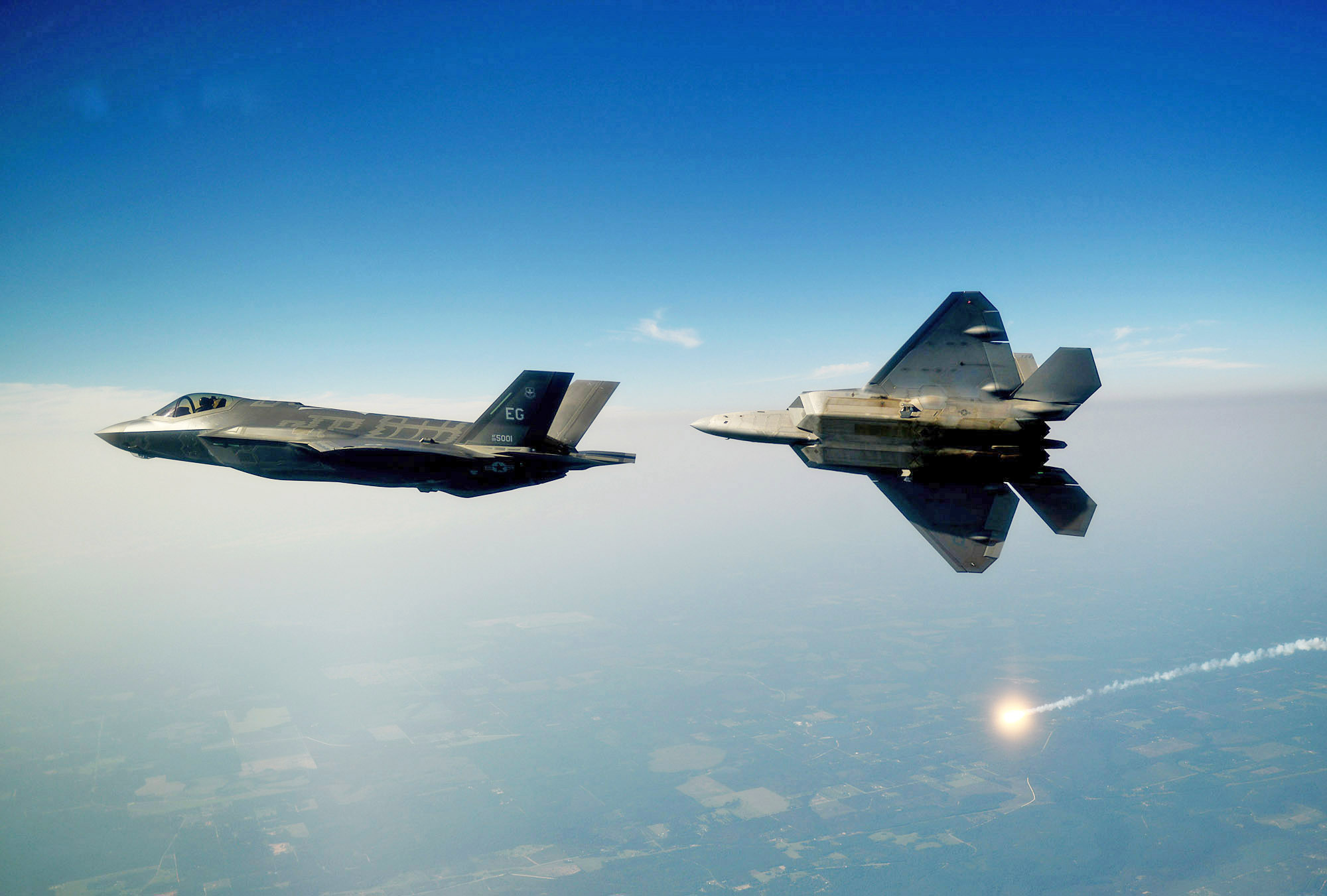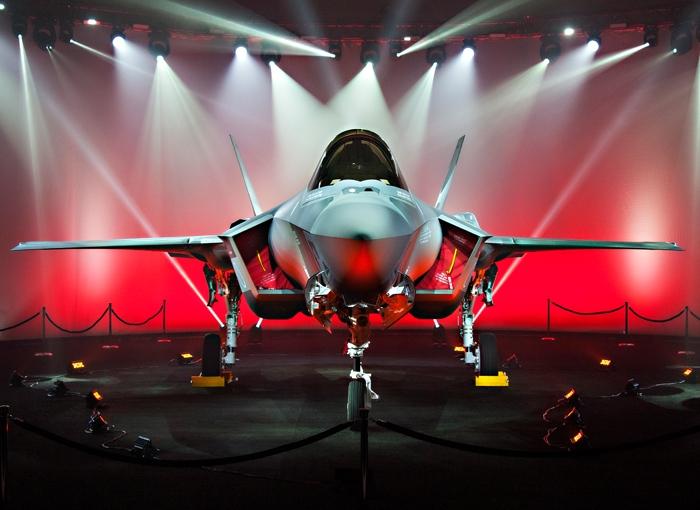Reuters has published a report that came as little surprise to us at The War Zone regarding Tokyo’s interest in having Japanese industry work with Lockheed Martin to develop a semi-indigenous fighter that combines the best attributes of the F-35 Lightning and F-22 Raptor.
The Reuters report states in part:
“Lockheed has discussed the idea with Japanese defense ministry officials and will make a formal proposal in response to a Japanese request for information (RFI) after it receives permission from the U.S. government to offer the sensitive military technology, said the sources, who have direct knowledge of the proposal.
The decision on whether to release parts of the highly classified aircraft designs and software to help Japan stay ahead of Chinese advances will test President Donald Trump’s promise to overhaul his country’s arms export policy.
The proposed aircraft “would combine the F-22 and F-35 and could be superior to both of them,” said one of the sources.”

Although Japan has put forward notional Raptor-like designs, what they could also be talking about here is merging the higher kinematic performance and low-observability of the F-22 with the F-35’s smarter attributes—including updated avionics, mission computers, and sensors—as well as new lower-maintenance skin coatings. We at The War Zone have posited exactly this, writing the following in a 2016 article dubbed ‘Just Allow The F-22 To Be Exported To Japan Already’:
“Japan always wanted the F-22—badly. But nearly two decades ago, congress barred the super-fighter from being exported to anyone, including America’s closest allies. This act slashed Japan’s F-22 dreams, although they kept asking.
Times have changed, and with Japan facing down a drastically more aggressive and advanced Chinese military—one that has territorial ambitions in direct conflict with Japan’s own claims. The tension has manifested in the air-to-air realm, with Japan intercepted a whopping 199 Chinese aircraft between April and June of this year, and those intercepts are getting more aggressive.
Combined with threats from North Korea, this new reality has been taken very seriously by Japan, which has put in place aggressive initiatives to upgrade existing fighter aircraft and acquire new ones with greatly enhanced lethality.
The F-22’s technologies are also no longer experimental. In fact, they are decades old. In many ways, the exportable F-35 is more technologically advanced than the F-22. At this point, the export ban on the F-22 is more of a protectionist tool to bolster the F-35’s production numbers than a national security play.
But now a $40 billion tender is being put forward by Japan to indigenously develop or import a new super fighter design. Although Mitsubishi’s X-2 technology demonstrator has just taken flight, it is just that: a technology demonstrator. Despite inaccurate press reports that the X-2 is a prototype, there’s is no guarantee it will make it into production in the coming decade. Think of it more as a Bird Of Prey than a YF-22.
The USAF is finally looking at restarting the Raptor production line, but the chances of that happening are almost nil, because doing so would directly challenge the F-35 program. And although the F-22 is the only existing fighter that can actually fulfill Japan’s $40 billion tender, it will likely be shot down by Lockheed, the USAF and congress. Meanwhile, Japan is already an F-35 customer, with 42 of the jets on order.
This sounds crazy but there may be an opportunity here for Japan to foot the cost of restarting F-22 production, which is supposedly the major barrier keeping the USAF from buying more Raptors. However, the reality is that a dollar spent on a new F-22 is a dollar taken away from producing more F-35s. So although the increasingly positive platitudes from high-up USAF officials have hinted that they would love to have more F-22s, the abstract effects of doing so are politically unpalatable.
Anything to protect the F-35—and I mean anything.
So what we will probably end up with is a situation where a major US defense aerospace prime contractor, let’s say Lockheed Martin, works with Japan’s Iron Triangle supported defense industrial base to build, well, pretty much an F-22, although not an exact copy. This will come at far higher cost than just restarting the line, but doing so will not endanger the F-35’s budgetary supremacy within the USAF and the Pentagon as a whole.
This has actually been done before to a certain extent, see the Mitsubishi-Lockheed F-2, Japan’s semi-indigenous F-16. These jets, of which Japan bought a similar number of around 100, ended up costing well over $100 million each when they could have just bought advanced block F-16s for a third of that price and left comparatively little capability on the table.
It all sounds pretty stupid, doesn’t it? Here there is a real opportunity to get the F-22 back in production and likely in an upgraded fashion with more advanced and serviceable avionics and other components, potentially all on Japan’s dime. The USAF could piggyback the JASDF order and bolster its fleet of just 183 F-22s (of which only about 125 are combat coded at any given time) for largely the unit cost alone. But this super-logical offering will likely never happen, because nothing can endanger the F-35, both from a manufacturer’s point of view and Washington’s.
Japan is slated to make its “F-3” fighter choice in the summer of 2018 so there is still a couple of years for Washington to come to its senses and make an about-face on its F-22 embargo, although I wouldn’t hold my breath.”
Fast forward a couple years and the F-35 program has progressed past the point of no return and President Trump is looking at pretty much any opportunity it can to boost sales of weapons to allied nations. With this in mind, the chances of such an initiative actually happening have increased dramatically. The biggest question is does Japan have the financial capacity to take down such an expensive project, especially considering other new competing priorities. These include everything from acquiring a cruise missile, to setting up Aegis Ashore ballistic missile defense batteries, to fielding F-35Bs on its helicopter carriers.
The $366M Mitsubishi X-2 technology demonstrator took its final flight last year after a relatively short life. Apparently, technical difficulties impacted the program and it was clear that Japan would need a deep foreign partnership in order to field a stealth fighter that could also benefit Japanese industry:

What’s also new is that the USAF has completed a study that looked into what it would cost to put an updated F-22 back into production. The basic findings were:
-Approximately $50 billion to procure 194 additional F-22s
-The total includes an estimate of approximately $7 billion to $10 billion for non-recurring start-up costs and $40.4 billion for aircraft procurement costs
-An estimated cost of $206 million to $216 million per aircraft (the last F-22 produced had a unit cost of $137 million)
That cost may be too high for the USAF to stomach, but for Japan, it’s highly unlikely they will be able to field something superior to an updated F-22 for anywhere near less. It’s also likely that once the U.S.-specific politics of putting the Raptor back into production are removed from the equation, the cost of doing so would drop.

But if Japan is willing to buy an updated Raptor instead of developing a near identical but still unique design, clearly doing so would present a mutually beneficial opportunity. If the U.S. would become a minority stakeholder in an F-22 production line restart of sorts, with the intent on buying a number of airframes to bolster the USAF’s undersized and cherished F-22 fleet, then the opportunity could work out for both parties.
Once again, the F-35 lobby will be strongly against such a move even though the F-35’s future is now assured. Any fighter dollar given to another program is one less spent on it, but the possibility that the USAF could acquire a Raptor 2.0 of sorts without bearing the vast majority of the non-recurring restart and development costs is an incredible proposition. If Japan is looking to buy a couple hundred fighters and the U.S. was to add onto that order, the unit cost for each jet would plummet as well.
As for Japan, it would benefit by realizing lowered unit costs, technology transfer, and also by being a key supplier for certain components of the jets built for both Japan and the United States. The potential to export the jet could also be an added benefit, but this would likely be curtailed by the U.S. in order to protect F-35 sales abroad. But above all else, Japan will be able to lower its risk substantially by buying into an existing and proven airframe, improving upon it, and will benefit from the full backing of the U.S. government and industry in doing so.

Also, keep in mind Donald Trump’s extremely close relationship with Prime Minister Shinzo Abe. Approving Japan to get ‘the very best’ while also lining the pockets of big defense contractors seems like a very attractive proposition for Donald Trump. And it seems pretty clear that when it comes to weapons export to Japan, Trump is willing and ready to give Abe what he wants.
We will watch how this story develops closely, but if the Pentagon was smart, they would embrace an upgraded F-22 restart with Japan, and if Tokyo is willing to foot the majority of the bill for doing so, the USAF would be nuts not to take advantage of it.
Contact the author: Tyler@thedrive.com
